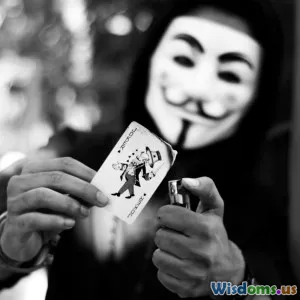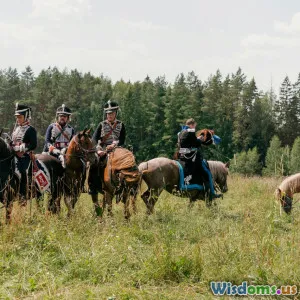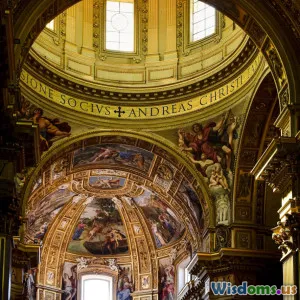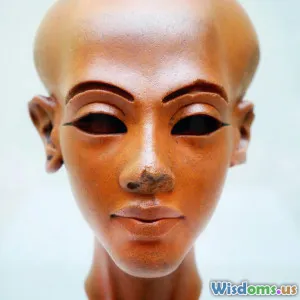
Decoding the Mystique of Secret Organizations
8 min read Explore the secrets behind secret organizations and their impact on society throughout history. (0 Reviews)
Decoding the Mystique of Secret Organizations
Secret organizations and societies have long fascinated the public imagination. Cloaked in mystery, shadowed by rumors, and surrounded by speculation, these groups wield intrigue far beyond their often limited memberships. But what really lies behind the mystique? This article attempts to peel back the layers of secrecy surrounding these organizations and provide a grounded, insightful understanding of their true nature, influence, and significance.
The Allure of Secrecy: Why Secret Organizations Captivate Us
From the Freemasons and the Illuminati to modern-day exclusive clubs, secret societies have perennially intrigued people. This fascination stems partly from our inherent curiosity about the unknown, fueled by decades of novels, conspiracy theories, and popular media portrayals. The secrecy itself acts as a draw—access denied to the public makes even modest claims by these groups seem grandiose.
The concept taps into a deeper cultural symbolism, representing exclusive alliances, forbidden knowledge, and the desire to belong to something powerful beyond the ordinary social fabric. As sociologist Janja Lalich explains, "Secret societies often create a sense of identity and meaning for their members, tapping into a universal human need for connection and purpose."
Historical Origins and Evolution of Secret Societies
Secret societies are far from a new phenomenon. Their existence can be traced back to ancient civilizations:
- Ancient Greece and Rome: Groups like the Bacchae and mystery cults offered initiates secret knowledge, often tied to religious rites.
- The Middle Ages: The Knights Templar combined military, social, and religious roles, rumored to hoard arcane wisdom.
- Enlightenment Era: The Freemasons emerged, distinguished by symbolic rituals, philosophical teachings, and a strong emphasis on moral uprightness.
Throughout history, these societies evolved from spiritual or fraternal groups into sometimes politicized entities. For example, the Carbonari in 19th-century Italy played a crucial role in revolutionary movements aiming at Italian unification.
Common Features: What Defines a Secret Organization?
While secret societies can differ widely, they often share core characteristics:
- Selective Membership and Initiations: Entry is usually highly regulated with secretive initiation rituals intended to strengthen bonds.
- Exclusive Knowledge and Symbols: Many possess proprietary symbols, handshakes, or writings, underpinning their esoteric knowledge.
- Confidential Communication: Members often use coded language or private meeting places to maintain privacy.
- Shared Philosophy or Mission: These organizations tend to have an underlying agenda, whether mystical, political, or social.
An illustrative example is the Skull and Bones society at Yale University, which selects a handful of students annually whose membership often influences future American leadership.
Influence and Impact: Power Behind the Veil
Much of the fascination relates to the degree of influence these groups exert at local, national, or even global levels.
Political and Cultural Power
Secret organizations are sometimes accused—rightly or wrongly—of manipulating political events behind the scenes. For instance:
- Freemasonry: Many early American leaders, including George Washington and Benjamin Franklin, were Freemasons, leading some to suggest Masonic ideals shaped U.S national identity.
- Illuminati Myth: While the historical Bavarian Illuminati was short-lived, contemporary conspiracy theories allege grand plans for controlling world affairs.
Philanthropy and Social Networking
Not all secret societies are shrouded in suspicion. Numerous groups like the Rotary Club or certain Masonic lodges operate charitable initiatives impacting education, disaster relief, and social welfare.
Cultural Significance
Symbolism and rituals from secret organizations have permeated art, literature, and pop culture profoundly. Dan Brown’s novels, for example, spotlight secret societies weaving history and mystery in compelling narratives.
Demystifying Common Misconceptions
Much mythology surrounds secret societies, but separating fact from fiction is crucial:
- Not All Are Conspiratorial: Many societies exist simply as fraternal or academic clubs without ulterior motives.
- Transparency Increasing: Modern openness has led some societies to declassify elements of their history and rituals.
- Social Networks, Not Shadow Governments: Powerful connections exist, but most groups are neither omnipotent nor omnipresent.
Academic research by historians like Margaret Jacob points out that most secret organizations historically aimed for intellectual exchange and social bonds rather than world domination.
How to Approach Secret Organizations Critically
If you are curious or concerned about secret societies, consider these approaches:
- Research Credible Sources: Peer-reviewed historical accounts and sociological studies provide balanced views.
- Question Sensationalism: Beware conspiracies lacking substantive evidence.
- Understand Social Context: Consider the era, politics, and culture shaping these groups.
Conclusion: The Enduring Appeal and Lessons from Secret Organizations
Secret organizations fascinate because they blend the known with the unknowable, blending human needs for connection with our love of mystery. While cloaked in shadows, their real influence is often subtler—as forums for camaraderie, vehicles for social mobility, or catalysts for ideas.
By decoding the mystique, we gain sharper insight into how secrecy shapes human dynamics—not just in clandestine meetings but in the broader societal currents as well. Embracing this nuanced understanding can inspire us to be curious yet discerning about the hidden contours of social life.
"The secret of freedom lies in educating people, whereas the secret of tyranny is in keeping them ignorant." – Maximilien Robespierre
References
- Lalich, Janja. Bounded Choice: True Belief in Confined Systems. University of California Press.
- Jacob, Margaret C. Living the Enlightenment: Freemasonry and Politics in Eighteenth-Century Europe. Oxford University Press.
- Dumas, David. The Secret Societies and How They Changed History. Journal of Historical Mysteries, 2018.
Rate the Post
User Reviews
Popular Posts





















